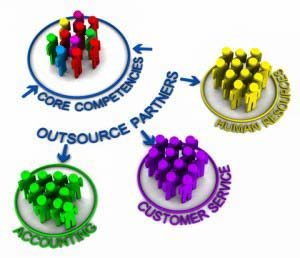by virtualworks | May 22, 2023 | Business, business growth, Leadership, Mastery, Productivity, Time Management, Uncategorized, working from home, working remotely
 Outsourcing of services is becoming more and more mainstream and with the abundance of former corporate workers who have vast knowledge and experience and now run their own businesses, you will likely be able to find someone to help you for a reasonable amount of money. Just as business owners can operate from just about anywhere, resources can provide services from anywhere. But whatever your needs are, always remember: “buyer beware”!!
Outsourcing of services is becoming more and more mainstream and with the abundance of former corporate workers who have vast knowledge and experience and now run their own businesses, you will likely be able to find someone to help you for a reasonable amount of money. Just as business owners can operate from just about anywhere, resources can provide services from anywhere. But whatever your needs are, always remember: “buyer beware”!!
Here’s a few things to consider when outsourcing:
- The lowest priced outsourced solution may not be the best; good people cost money and beware that even these days, you still get what you pay for.
- If you’re just starting out, outsource from the very beginning with a Virtual Assistant and a bookkeeper and grow your team from there. As your business grows, you can take on a web designer, a ghost writer, a graphic designer, an executive assistant, a project manager, etc.
- Don’t outsource a task just because you don’t want to do it. There will be tasks that only you can do because they’re important to operations and strategic plan.
- Always strike a fair deal with your resources and treat them with respect. You’re relying on them to handle important tasks for you and your business so don’t take advantage of them.
- Bartering. This is a great way to get things done for no cost in exchange for services. Make sure that you and the resource are clear about the terms and that the services you each provide are both what you want. Beware that this mode of payment isn’t for everyone.
On the personal side of your life, you might think about outsourcing to further free up your time:
- A personal assistant to help keep you and your family organized;
- Housekeeper/house cleaning service;
- Property maintenance;
- Grocery service, errand service
When I first started my remote support agency, I thought I would lay-off my housekeeper, thinking that since I would be working from home, I could manage the house myself. A very wise business coach I met during my early networking days advised me against it. The reason? “You’re going to be at work during the day.” She was correct, of course, and my housekeeper is still with me to this day. What are your priorities? What would make your life easier and be less stressful for you? Give it some thought!
by virtualworks | Feb 26, 2023 | Leadership, Mastery, Productivity, Time Management, Uncategorized, working from home, working remotely
 Over the past several years the physical landscape of the traditional office space has changed to evolve and promote productivity of its workers. Ergonomics assessments, increasing natural lighting and working with flexible schedules are examples of changes that have helped in this regard, but what if your employees are finding they are more productive outside of the office environment?
Over the past several years the physical landscape of the traditional office space has changed to evolve and promote productivity of its workers. Ergonomics assessments, increasing natural lighting and working with flexible schedules are examples of changes that have helped in this regard, but what if your employees are finding they are more productive outside of the office environment?
While some companies have successfully integrated the ability for workers to work from home where feasible and as shown in this Globe and Mail article,(dated 2017) some managers and leaders find it challenging to manage workers that are not located on the company’s site. Many times, there is a trust issue between management and employees or hired virtual workers that need to be dealt with to allow a successful off-site arrangement to work. These issues are as relevant today as they were when remote working was becoming more commonplace.
A common question that we hear is “How will I know if the work is being done right, or being done at all?”
The simple answer: Outcomes and Results.
The proof is in the pudding as they say. This may be accomplished by setting goals for the day, week, and month for the off-site worker to meet and if actual time worked is a concern, the worker can submit a weekly time sheet either manually, or using time tracking software online.
For the most part, when an off-site worker is trusted they may feel more invested in a company that understands the importance of working off-site and may want to have their best work shine through in those results and outcomes. So if you’re on the fence about off-site work, here are just a few benefits to this way of working:
- Your very valuable time. The day of a manager or leader can be packed,with all employees in the office valuable time is taken by “doing the rounds” to check and see what everyone is up to, but is there a value in this?
- Workers that have opted for off-site work tend to be more productive, as there may be things within the office environment they find distracting or may just work at a different pace and timeline than what has been established as the norm.
- Workers that have opted for off-site work and have been given the opportunity to do so may have greater respect for those they are working for, as they may feel they are being understood.
- Many off-site workers tend to find a better balance of their social commitments and work with less absenteeism.
- Communications with your off-site worker are as simple as picking up the phone, sending an instant message, sending an email, or starting a Skype conversation.
Remember though that remote working isn’t for everyone! Some people are their most productive working on their own in peace and quiet (like yours truly). Other people need a place to go every day and work well with interruptions and face-to-face interactions. Either way, in today’s information society it still comes down to outcomes and results however, working remotely allows for much more autonomy for the responsible human to provide the results on the due date without management knowing when the work was actually done.
by virtualworks | Jan 30, 2023 | Business, business growth, Marketing, Mastery, Team Work, Time Management, Value Based Fees
 When an organization needs to write a proposal, it can be for many different reasons, such as business proposals, project proposals, proposals for research funding or non-profit organization funding, each of which require a particular focus. Today I’ll focus on writing proposals in response to a solicited request, like contract work.
When an organization needs to write a proposal, it can be for many different reasons, such as business proposals, project proposals, proposals for research funding or non-profit organization funding, each of which require a particular focus. Today I’ll focus on writing proposals in response to a solicited request, like contract work.
All organizations need revenue, whether they are non-profits, associations or business enterprises. While it’s great to have repeat clients and members, there are times where organizations have to get out there and look for that work by other means and one method is by responding to a Tender, Request for Quotation, Request for Services, Request for Proposal, etc.
At times when an organization is provided with one of these Request documents, it can be met with some shock as to the amount of information being requested for a simple piece of work. Why so much detail? In short, some of the Requests may be from clients that use public funds and are accountable for how those funds are spent or the client is simply seeking good value for money and are looking for evidence from organizations that their potential contractor is capable of providing the services in a manner that is of good quality and is cost effective.
So, what makes a good proposal?
Like any consumer, the client is looking for good value for the money they plan on spending. By responding to what they are looking for, or solving their problem, stated in the request in a clear manner, a well written proposal can give you the edge on the competition.
There are many areas on the internet to find information on how to prepare a proposal. For example, if you are considering preparing a proposal for the Government of Canada, you may want to check out their site at buyandsell.gc.ca on Preparing Proposals.
Let’s take a look at some of the Do’s in proposal writing:
- Do read the request thoroughly to understand what the client is looking for. You need to understand where the client is coming from in their current state, their needs, and possible opportunities to provide a solution to their problem.
- Do ensure the goods or services are something your organization provides. If you are looking at a Request that is asking for something you may not provide, you may have to look at sub-contracting a portion of that work (if allowable), or it may not be worth your time to respond.
- Do ask questions where something is not clear, or you need information to help you prepare your proposal. These questions are helpful to the organization submitting a proposal and it may tell the client where they need to make the request clearer for all.
- Do watch out for question deadlines and submission deadlines – Proposals received after deadlines are usually not allowed.
- Do really take a look at the criteria in the Request. In most cases it is the criteria what your proposal will be reviewed against, so make sure to answer all parts of each criteria listed in the Request document.
- Do plan ahead to make sure there is enough time not only to write the proposal, but research the Client, understand the resources you have available, and have the proposal reviewed a few other people in your organization to make sure the submission is aligned with the Request. Another pair of eyes is always good!
The obvious Don’ts are those actions contrary to the Do’s above and:
- Don’t have the client search on external links for supporting material, especially if the request states that all supporting material must be in the proposal. In many cases, information from external sources can’t be taken into consideration and proposals are reviewed as they are provided, with no opportunity to add more in later. NB: some exceptions may be allowable, but they will probably be stated in the Request document, if they are.
- Don’t put it on your references to fill in the blanks of what should be in your proposal. If there is a request to provide references these are most likely only to verify what was stated in your proposal.
While it was mentioned above that Requests are received from clients, there are also many sites where organizations can search for potential Request documents to provide a proposal to such as MERX, Biddingo. Also check your city’s municipal, university, hospital or non-profit websites.
Best of luck in your proposal writing endeavors!
by virtualworks | Oct 23, 2022 | Business, business growth, Leadership, Marketing, Mastery, office management, Productivity, Remote Office Management, Time Management, Virtual Assistant, working from home, working remotely
 Have you ever come out of a meeting, or the end of day and caught yourself in a mirror and realized that you have a piece of schmutz in your teeth, or your cow-lick is asserting its personality again? We have all had that moment when we think “WHY DIDN’T SOMEONE TELL ME?”
Have you ever come out of a meeting, or the end of day and caught yourself in a mirror and realized that you have a piece of schmutz in your teeth, or your cow-lick is asserting its personality again? We have all had that moment when we think “WHY DIDN’T SOMEONE TELL ME?”
As small business owners we can spend so much time in the tasks that we forget what our goals are. If only gauging how well we are running our business is as simple as looking in the mirror! When it comes to taking your business to the next level, a level of self-awareness is required to assess the needs of your business and how your management style can be maximized for growth.
Take a look at your business and your strengths and values (and be honest about it!). Determine what makes sense for you to do and what is reasonable for someone else to take care of.
To identify exactly what you need, do the following for one work-week:
- As you go through each workday, write down the daily tasks that you dislike doing (or, put another way, make a list of the things you do last because you keep putting them off)
- Write down all the projects you’ve “had on the back burner”; those projects and tasks that never seem to get done week after week, month after month.
- Write down all the things you spend too much time doing (why are you really in the office all the time?).
- Write down all the things you wish you had more time to do.
- Write down all the tasks you must do as a business owner.
Ask people you know to work through this with you as they may provide a different perspective. There might be metaphorical spinach in your teeth that they are begging for the chance to tell you about!
Don’t think about how much it will cost or how long to get these resources in place. Just think about you for now and ask yourself what you need to do in order to move your business forward.
Need help? Click here to get my free e-book to help you gain clarity.
by virtualworks | Sep 25, 2022 | Business, business growth, Leadership, Marketing, Mastery, Outsourcing, Productivity, remote meetings, Remote Office Management, Team Work, Time Management, Travelling, working remotely
 Remote support was pretty much non-existent 25 years ago. Facebook didn’t exist 20 years ago. Times, they are a’changing…
Remote support was pretty much non-existent 25 years ago. Facebook didn’t exist 20 years ago. Times, they are a’changing…
Remote work has grown in popularity over the last 5-10 years and more so with the pandemic we’ve been dealing with the past 2+ years, it’s become a necessity. The Internet and evolving technology drive the ability for remote support workers to be just that: “remote”. That can mean being remote locally or remote internationally; it can mean telecommuting for employees or freelancing as a contractor from anywhere on the planet for clients anywhere on the planet. The world has become larger and smaller at the same time: larger because remote working can easily tap into new markets around the world and increase competition (which can be a good thing); smaller because it takes less time and cost to do so.
It wasn’t too long ago that the average person didn’t know too much about video meetings or needed an international calling plan. Today, companies are expanding their enterprises globally without ever leaving their hometown; hiring remote employees who are local to new markets gives enterprise an edge. While this can be a very cost-effective way to conduct business, it takes more than just hiring people to work for you; it takes a thorough review of all factors that come into play for all stakeholders. It’s important to know the legal and accounting aspects of these relationships as well as being mindful of language barriers of both employees and clients.
Even in spite of the pandemic, the world is open for new opportunities. With ever-evolving technology and lower costs to connect, open your mind to the endless possibilities that are happening around the world and around the clock.
 Outsourcing of services is becoming more and more mainstream and with the abundance of former corporate workers who have vast knowledge and experience and now run their own businesses, you will likely be able to find someone to help you for a reasonable amount of money. Just as business owners can operate from just about anywhere, resources can provide services from anywhere. But whatever your needs are, always remember: “buyer beware”!!
Outsourcing of services is becoming more and more mainstream and with the abundance of former corporate workers who have vast knowledge and experience and now run their own businesses, you will likely be able to find someone to help you for a reasonable amount of money. Just as business owners can operate from just about anywhere, resources can provide services from anywhere. But whatever your needs are, always remember: “buyer beware”!!




Recent Comments